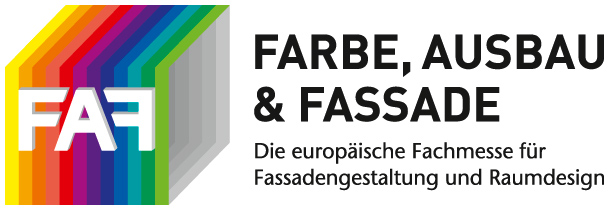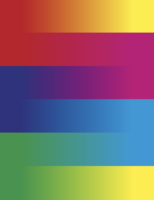
How do colors affect our well-being and health? Can you smell and taste them? Which colors and materials will be trendy in the future? 402 exhibitors from 26 countries will be presenting their latest developments and products at FAF. Prof. Dr. Axel Buether, color and trend researcher from Wuppertal, reveals in an interview what power colors have on people and how aromatic feel-good worlds can be created within your own four walls.
Prof. Buether, what power do colors exert on us? How do they affect our behavior?
Prof. Axel Buether: The fact that we see colors is no coincidence, but an extremely useful invention of evolution, in which we share with many other living beings. The colors of nature form the largest communication system on earth that provides orientation, because every color has its own meaning. Colors make it easier for us to find healthy and wholesome food. They make invisible whatever we want to hide and emphasize what is important. Colors are a status symbol and play a major role in social interactions. However, colors are most important for the formation of one’s own identity. Colors have an amazing power on our behavior, as they affect our emotions as well as our mind.
How can we benefit from this power?
Prof. Axel Buether: Since we perceive colors unconsciously 99 percent of the time, we are controlled by them without really noticing it. We can do something for our health if we choose the right individual colors for our diet, our home and our furnishings. We have just completed the world’s largest study on the “Colors of Health” at the Helios University Hospital in Wuppertal and were able to prove that the new room colors have reduced the consumption of important medications in two intensive care units by an average of 30 percent. This applies above all to neuroleptics, which are given for agitation, aggression and anxiety. The right colors in the right place can save lives. The choice of color is rarely risky in everyday life, but it is always good for us if we can relax, regenerate and recharge our batteries at home or concentrate and perform better at work.
To what extent do colors influence our diet?
Prof. Axel Buether: Colors not only affect our sense of sight, as is commonly assumed, but also our sense of smell, taste and touch. In childhood, we get to know the world and learn that people, things and spaces have very different characteristics. Later, it is enough for us to look. Children refuse to eat if what they see does not whet their appetite. Colors play a decisive role here, as they are inherently there to guide us in choosing healthy and wholesome food. When the colors look delicious, the brain drives down blood sugar levels and stimulates the production of digestive juices. We work up an appetite. The whole thing also works the other way round, of course. Colors can also make us feel unwell. The right choice of color is always a matter of taste.
What is the tastiest color for you?
Prof. Axel Buether: I had millions of pictures taken of food and then sorted them by color. The most delicious color is definitely brown. Brown not only feels fantastic, it also smells and tastes irresistible. Exotic luxury foods such as chocolate, coffee, tea and tobacco or spices such as cinnamon, nutmeg, pepper, cloves or aniseed have a strong aromatic smell and a spicy to bittersweet taste in addition to their distinctive deep brown tones. We associate the typical brown nut taste with hazelnuts, walnuts and almonds or sweet chestnuts. We also roast, grill, fry and bake many dishes until they turn an irresistibly delicious shade of brown. Aromatic brown tones are downright addictive, and not just in the kitchen. With these wonderful aromatic brown tones, you can create a feel-good atmosphere in any room that is stimulating, invigorating and natural.
Studies show that large cities have their own color identity. Are colors perceived differently depending on the region?
Prof. Axel Buether: Everyone’s color preferences are shaped in childhood. I like to talk about color home in this context. The hues of nature play a large part in the regional color tones that trigger feelings of familiarity and security in everyone. The colors of the cultural area have just as much of an identity-forming effect. These include the colors of architecture, design, crafts and art, but also the familiar colors of squares and streets, interiors and furnishings, clothing and everyday objects.
How do regional color preferences affect façade design?
Prof. Axel Buether: Architectural spaces are not boxes, but atmospheres that are created through the interplay of light and material. Colors become facades when we perceive how the sunlight refracts on the surface. Hardly anyone touches facades with their hand. We feel the haptic qualities of surfaces almost exclusively with our eyes. Color is the sensory medium with which we perceive the material and atmospheric qualities of rooms. If they are looking for colors that make them feel safe, protected and secure, then they are looking for their color home. For me, these are no longer just the familiar colors of my birthplace, but also the colors of the cities in which I have enjoyed living. An important part of my color home are the many fascinating colors that I have discovered on my travels and kept in my memory.
Wishes are becoming increasingly individualized. What does the craftsman have to do to meet these requirements? Your personal tip for the practice?
Prof. Axel Buether: In the past, tradespeople were concerned with the theory and practice of their trade and were experts in their field. With the separation of planning and executing professions a few decades ago, this has changed fundamentally. Most architects and designers today do not understand much about the practical problems of color, its materiality, processing and durability. Craftsmen, on the other hand, are rarely in a position to provide their customers with comprehensive advice because they lack basic knowledge of color science. Colors are not just decoration, they fulfill important biological and cultural functions and thus have a very strong effect on the experience and behavior of every human being. Unfortunately, the current state of color research is not adequately conveyed in the existing color theory, which is why I do not blame planners or craftsmen. Knowledge of color contrasts and color symbols is not enough to develop effective color concepts. The ball is clearly in the court of applied color research, i.e. experts like me. Interested parties can obtain further training and information in new publications, lectures, specialist conferences or at trade fairs such as the FAF.
About FAF FARBE, AUSBAU & FASSADE
The European trade fair FAF FARBE, AUSBAU & FASSADE has been held every three years since 1972. Munich and Cologne have alternated as trade fair cities since 1984. FAF is one of the world’s most important trade fairs for painters and decorators, plasterers, plasterers and drywallers, interior decorators and floor layers. It specializes in paint, finishing, facades, building protection, plaster, stucco and drywall construction. Innovative high-tech products are represented as well as products for traditional craftsmanship. Further information is available at www.faf-messe.de and on Facebook at www.facebook.com/fafmesse.
Press contact:
Dr. Patrik Hof, Head of Press and Public Relations
Mélanie Diss, Press and Public Relations Officer


